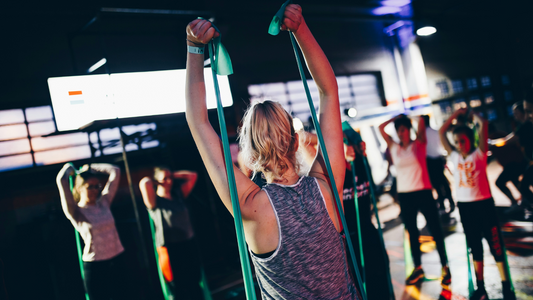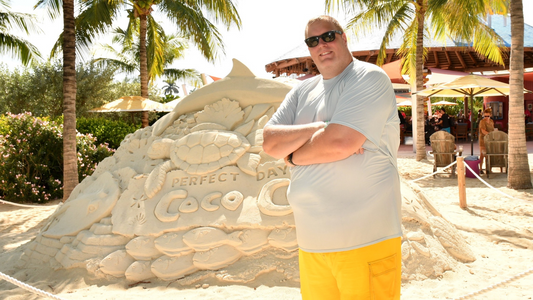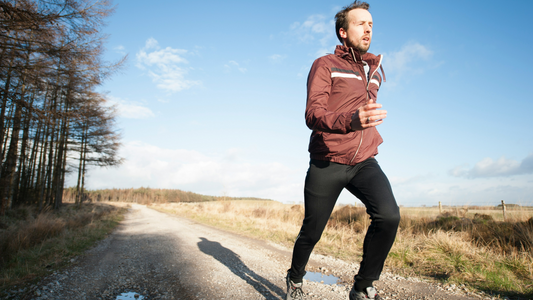

4 Types of Restorative Exercise and the Benefits
It’s normal to feel tired after an intense workout. What should you do next? You probably think you need to rest for several days, but the right answer may be the opposite. Restorative exercise is helping many athletes and exercise enthusiasts reach workout goals more efficiently.
Let ZOZOFIT break it down for you.
What Is Restorative Exercise?
Put simply, restorative exercises are activities designed to help with muscle recovery and overall well-being. This technique is also known as active recovery. These exercises tap into the body’s healing mechanisms while also promoting mental and physical relaxation.
There are several main types of restorative activities:
- Stretches: Pilates or yoga
- General physical activity: Walking your dog or playing golf
- Low-intensity exercise: Rowing, dancing
- Mindfulness: Meditation or breathing exercises
- Low-impact workouts: Elliptical machines or light cardio
All of these activities stimulate blood flow without putting your muscles through too much work.
Restorative Exercise vs. Passive Recovery
During active recovery, you’re still using your muscles — even the ones that feel sore. For example, if you’re experiencing delayed onset muscle soreness after leg day, you can still go for a relaxing walk. The movement stimulates your leg muscles, keeping them active.
On the other hand, passive recovery means resting muscles completely. You give your body a day off, as it were. Sometimes, you just need to kick up your feet and rest completely. You can still focus on wellness by playing relaxing music or enjoying some refreshing aromatherapy, though.
Passive recovery is important following injuries. If you notice sharp pain (rather than general soreness), you shouldn’t put weight on the joint or muscle. The RICE method of rest, ice, compression and elevation is a type of passive recovery. Resting is also smart if you feel physically exhausted.
Reasons for Restorative Workouts
There are several good reasons to follow a restorative workout program:
- To reduce downtime after intense activity, such as a marathon
- To cool down safely after a workout
- To take a short break between sets
- To recover after strength training
- To promote an active lifestyle focused on wellness
What about recovering after a sports injury? Physical therapy is a type of active recovery, but it’s not something you should try on your own. Improper stretching can do more harm than good, potentially injuring tendons or muscle tears all over again. Follow the instructions of your doctor or physical therapist to the letter.

Recovering from an intense workout day? Stretching is an excellent restorative exercise.
What Types of Restorative Exercise Can You Try?
These are all great ideas for active recovery.
1. Stretching
You already knew that stretching is essential before working out, but did you know that you should always stretch afterward, too? Here are a few post-run stretches to help you recover:
- Calf stretch
- Hamstring stretch
- Low lunge
- Lower back and hips stretch
- Butterfly stretch
Pilates or yoga moves are also great for gently stretching your legs, arms and core muscles on rest days following strength training.
2. Low-Impact, Low-Intensity Exercise
There are countless low-intensity activities you can do for recovery. Focus on things you enjoy physically and mentally, such as:
- Taking a relaxing stroll
- Dancing in your living room
- Going for a bike ride at the park
- Playing basketball with your kids
Swimming exercises your entire body but in a gentle manner. The water may even help reduce inflammation and soreness.
3. Breathing Exercises
Stress isn’t your friend when it comes to fitness goals. Anxiety can trigger pain, exhaustion, sleeping problems and muscle tension. It can also weaken your immune system and negatively affect your body’s healing mechanisms.
That’s why paying attention to the mental aspects of restorative exercise can help you recover, too. Breathing techniques that promote feelings of calm, relaxation, well-being and happiness can benefit both mind and body.
4. Massage
Massaging your muscles can provide many benefits for fitness, such as stimulating circulation. Plus, it tells your body to release endorphins, positive hormones that promote feelings of well-being and pain relief. To experience the results, you can schedule a massage session, rub your sore muscles yourself or use a foam roller to ease the tension in your body.
What Are the Benefits of Restorative Exercise?
In cold weather, drivers give their vehicles time to warm up in the morning before a long drive. Some physical activity between exercise periods can similarly help your muscles stay “warm” and ready to go.
Boosting Blood Flow
Your heart rate determines how much blood flows to your muscles, tendons and other tissues. Active recovery can get your heart beating, boosting the amount of blood these tissues receive. That means more oxygen and nutrients to help with repairs and muscle growth.
Speeding Up Muscle Recovery
Putting muscles through light activity can reduce the amount of lactic acid present. After an intense workout, the body creates a lot of lactic acid from burning glucose. That’s what causes the burning feeling, cramps, nausea and wheezing you feel. Cooling down with restorative exercise can help you recover from these symptoms more quickly.
Eliminating Waste Products
Physical activity and blood flow also assist in flushing toxins from muscle tissues. This can help you feel better overall after exercise periods.
Improving Muscle Performance
Alternating high-intensity exercise with low-intensity activities can help you extend your total exercise numbers. Your muscle performance may improve as well, giving you more stamina compared to passively resting after workouts.
Reducing Pain
According to one study, active recovery, massage and similar restorative exercise techniques can reduce muscle damage, lower the risk of injuries, help with inflammation and fatigue, and even improve the symptoms of DOMS. Overall, this means less pain and less chance of hurting yourself as your muscles recover.
Keeping You Focused on Fitness
One of the most important benefits of active recovery for many people is staying motivated during off days. It’s easier to follow a solid workout routine if you can stay active every day instead of only exercising a few times a week. By interchanging periods of moderate-intensity aerobics, weight training and active recovery, you keep your engine primed for activity every day.
How Can You Get Started With Restorative Exercise?
The best way to approach restorative exercise is to develop a personalized program that adapts to your circumstances, fitness goals and schedule. Experiment with different activities and keep the ones that work best for you. Track your progress toward your workout goals with the ZOZOFIT app today.

![zf-w-[168px] zf-h-[40px]](http://zozofit.com/cdn/shop/t/15/assets/logo-desktop.png?v=117713855448369080381753069598)




